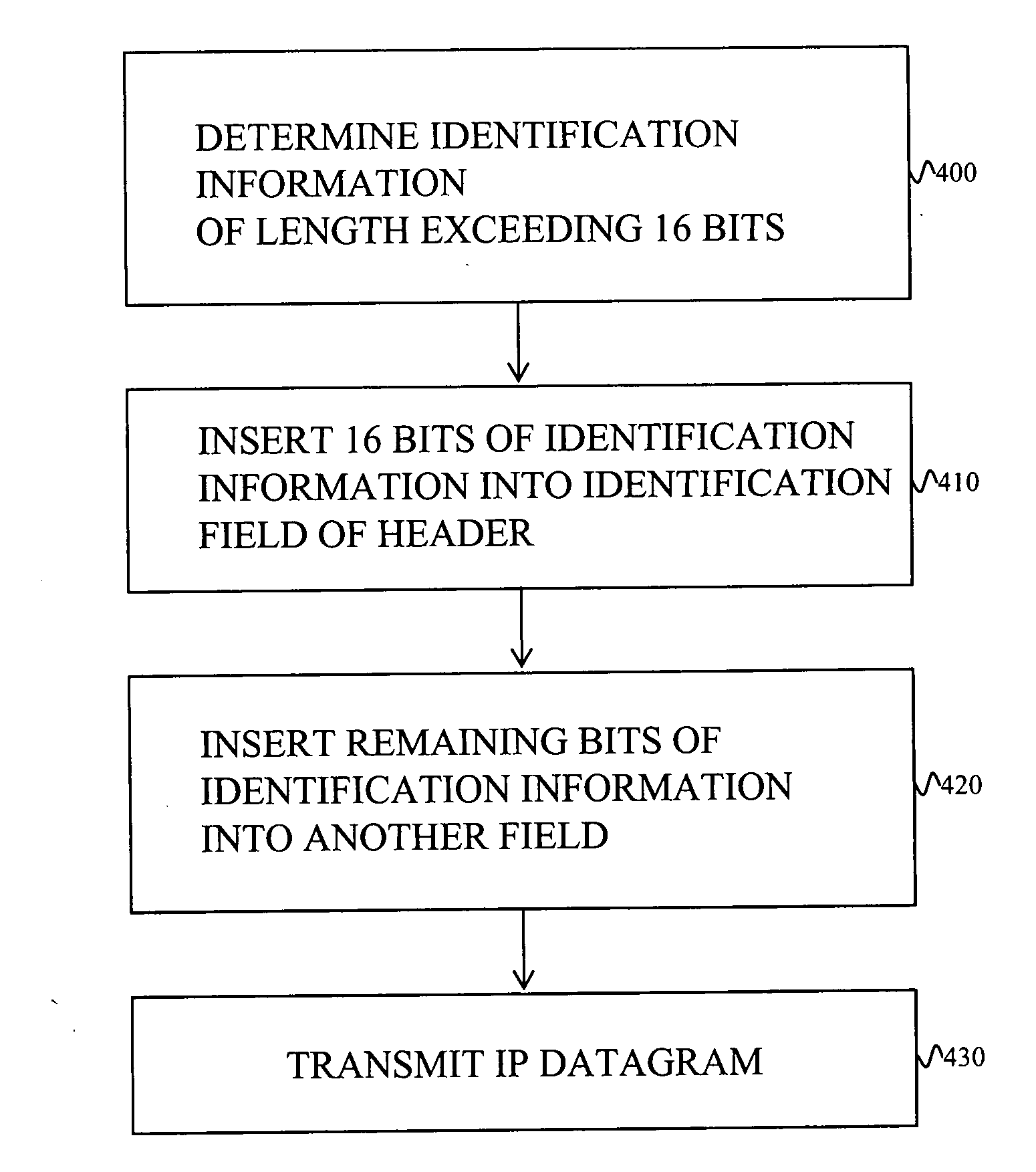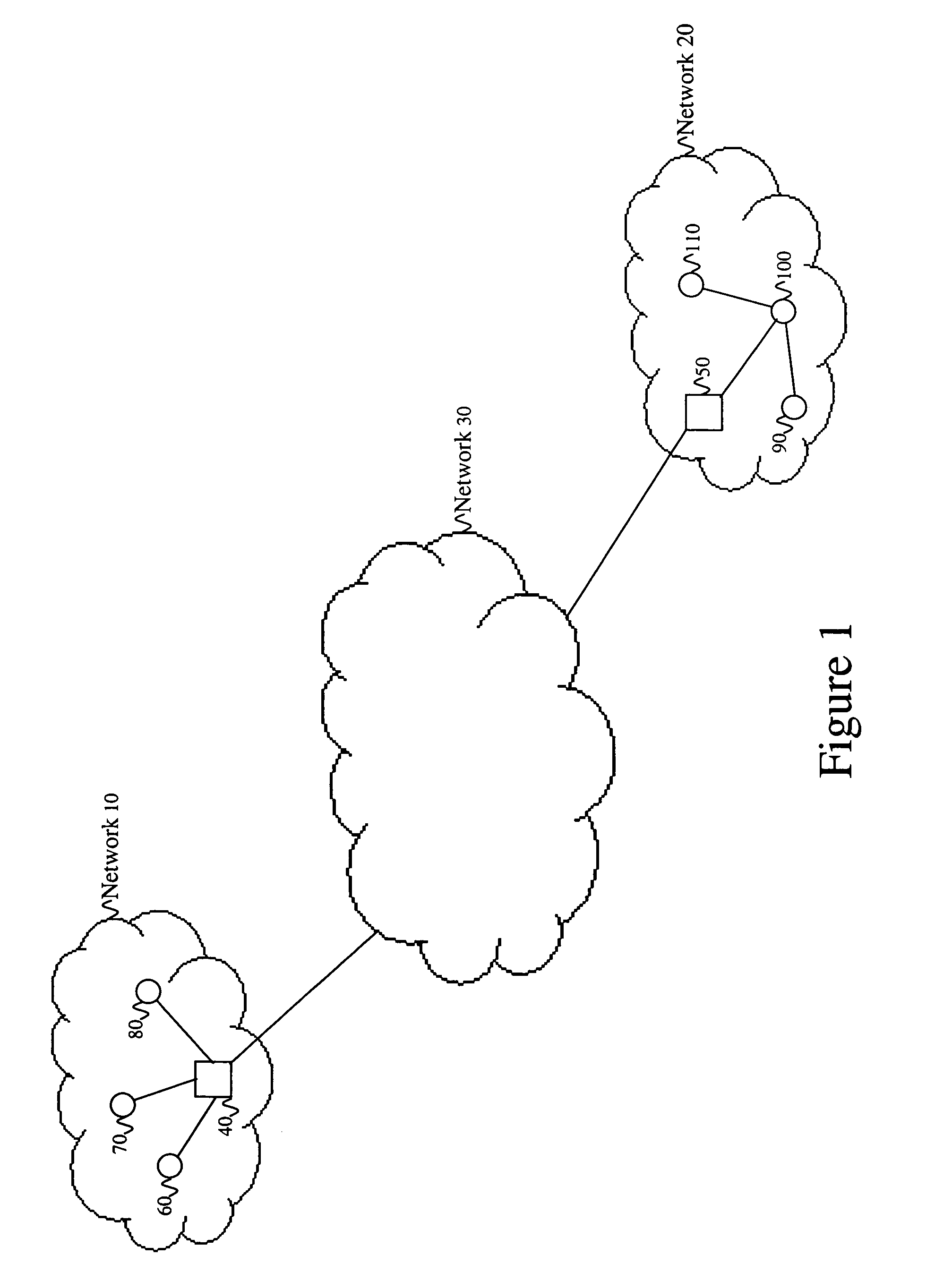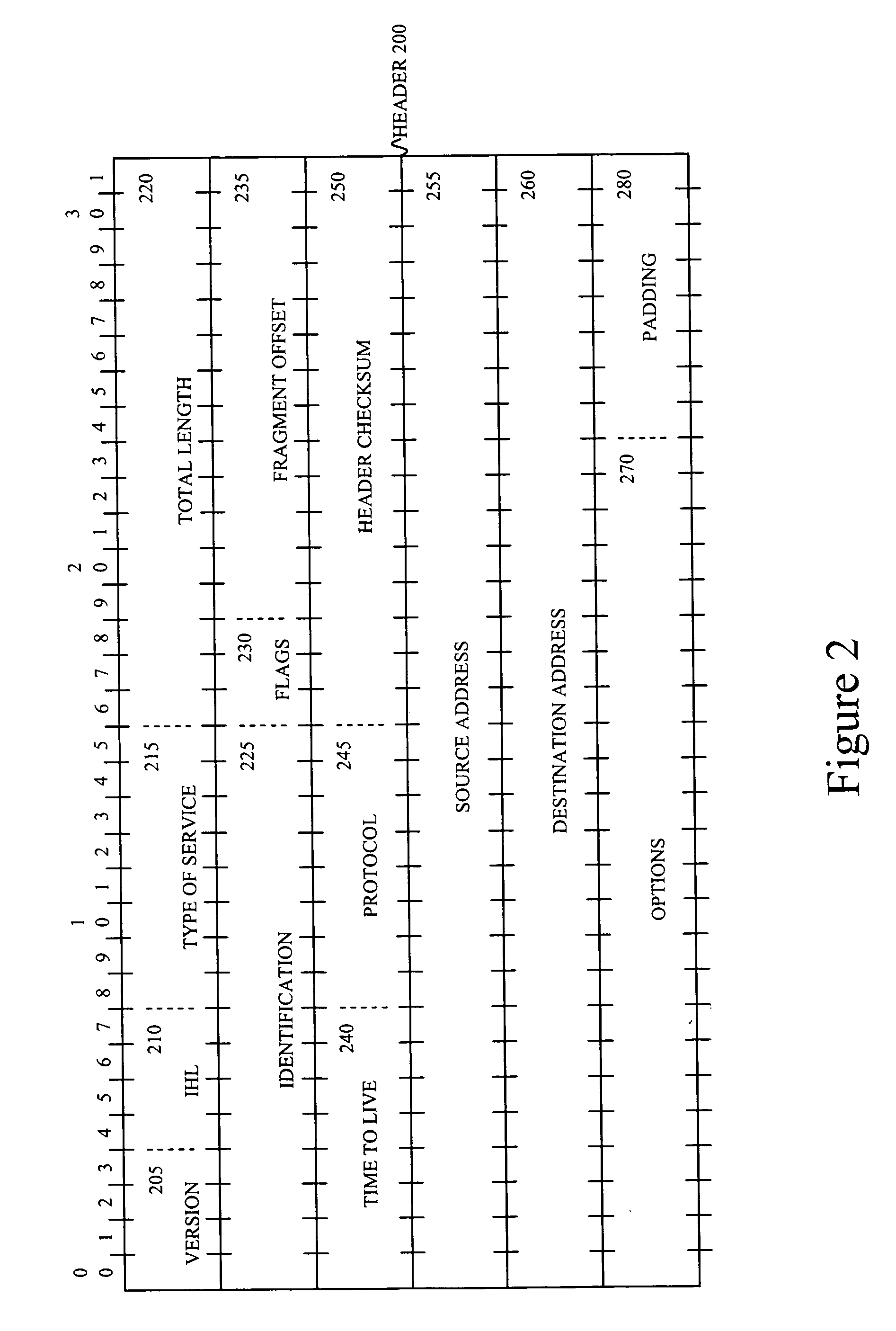Means of mitigating denial of service attacks on IP fragmentation in high performance IPsec gateways
a technology of ipsec gateway and ip fragmentation, applied in the field of secure communications, can solve the problems of reducing the probability of random collision, reducing the probability of success of a dos attack, and consuming time and money for reassembly at the receiving security gateway
- Summary
- Abstract
- Description
- Claims
- Application Information
AI Technical Summary
Benefits of technology
Problems solved by technology
Method used
Image
Examples
Embodiment Construction
[0045] Embodiments of the invention reduce the probability of success of a DOS attack on a node receiving packets by decreasing the probability of random collisions of packets sent by a malicious user with those sent by honest users. As discussed earlier, the probability of random collisions may arise from the malicious user sending packets containing all or a substantial percentage of all possible combinations of the bit sequences for fields in the IP header that are normally used to identify groups of packets that are fragments belonging to the same integral message from an honest user.
[0046] The probability of random collisions may be reduced in one class of embodiments of the invention by supplementing the identification field of the IP header of each transmitted packet with at least one bit from another field of the header. The identification field in previously known systems carries identification information that is at most 16 bits long. In embodiments of the present inventi...
PUM
 Login to View More
Login to View More Abstract
Description
Claims
Application Information
 Login to View More
Login to View More - R&D
- Intellectual Property
- Life Sciences
- Materials
- Tech Scout
- Unparalleled Data Quality
- Higher Quality Content
- 60% Fewer Hallucinations
Browse by: Latest US Patents, China's latest patents, Technical Efficacy Thesaurus, Application Domain, Technology Topic, Popular Technical Reports.
© 2025 PatSnap. All rights reserved.Legal|Privacy policy|Modern Slavery Act Transparency Statement|Sitemap|About US| Contact US: help@patsnap.com



